Disclosure: This article contains affiliate links. We may earn a commission from purchases at no extra cost to you, which helps our travel content.
When I first stepped foot on São Miguel four years ago, I was immediately struck by how this Azorean island seemed to exist in a category all its own—neither fully European nor entirely Atlantic, but rather a magnificent hybrid of volcanic drama and Portuguese charm. As someone who's spent two decades helping people navigate life's challenges, I find São Miguel to be nature's version of a therapeutic breakthrough: transformative, challenging at times, but ultimately soul-nourishing. My husband Carlos and I have returned twice since that initial visit, most recently bringing our teenage daughters to experience what we now consider the adventure capital of the Atlantic. This emerald jewel in Portugal's mid-Atlantic archipelago packs an astonishing diversity of landscapes into just 287 square miles—from steaming geothermal valleys and towering crater lakes to dramatic coastlines and lush forests. Pack your hiking boots and sense of wonder; here's my carefully curated guide to São Miguel's most rewarding outdoor experiences for your week of Atlantic adventure.
1. Hiking the Rim of Sete Cidades Twin Lakes
If São Miguel has a signature postcard image, it's undoubtedly the twin blue and green lakes of Sete Cidades cradled within a massive volcanic caldera. While many visitors settle for the classic viewpoint at Vista do Rei, I urge you to experience the full 12km circular trail that traces the crater's rim—a journey that transformed my understanding of what volcanic landscapes can be.
The trail begins near the abandoned Monte Palace Hotel (a fascinating urban exploration site in itself) and follows the ridgeline in a complete circuit around the caldera. What makes this hike exceptional isn't just the constantly changing perspectives of the lakes below, but the dramatic contrast between the manicured interior and the wild Atlantic views on the outer edge.
During our family hike last spring, we were blessed with that rare Azorean gift—clear skies for nearly the entire circuit. The girls were mesmerized by how the lakes seemed to change color as clouds passed overhead, shifting from turquoise to emerald to deep cobalt. Carlos, ever the photographer, filled our memory cards before we'd completed even half the circuit.
The path itself ranges from wide dirt tracks to narrower sections where the ridge becomes more defined. While not technically difficult, the exposure and occasional wind gusts make proper footwear essential. My hiking boots have proven perfect for Azorean terrain—supportive enough for the uneven volcanic soil yet comfortable for longer distances.
After completing the rim trail, descend into the crater to explore the charming white-washed village of Sete Cidades itself, where you can rent kayaks to explore the lakes from water level—an entirely different perspective that's well worth the additional time.
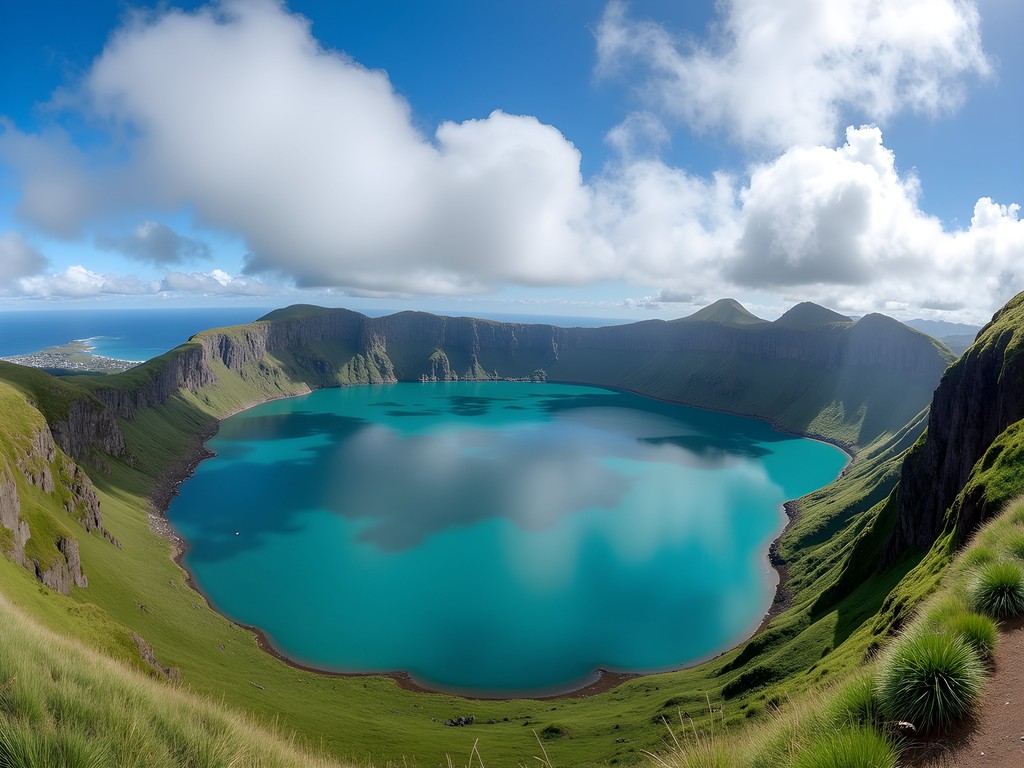
💡 Pro Tips
- Start early (before 9am) to avoid afternoon clouds that often obscure the views
- Bring more water than you think you'll need—the exposed rim offers little shade
- Consider hiking counter-clockwise for the most dramatic reveal of the twin lakes
2. Soaking in the Terra Nostra Thermal Pools
In my years of global travel, I've developed a simple philosophy: any day that includes a good soak in thermal waters is a day well spent. São Miguel offers numerous opportunities for geothermal bathing, but the crown jewel is undoubtedly the historic Terra Nostra Garden in Furnas Valley.
Nestled within a 200-year-old botanical garden, the main thermal pool at Terra Nostra is a vast iron-rich basin that glows with an otherworldly amber hue. Don't let the unusual color deter you—these mineral-laden waters (maintaining a consistent 35-40°C year-round) offer therapeutic benefits that locals have sworn by for generations. My first visit here came after an intense week of hiking, and I still remember how the warm, slightly viscous water seemed to extract every ounce of fatigue from my muscles.
What many visitors miss are the newer, individual thermal pools constructed at the far end of the garden. These smaller pools offer varying temperatures and mineral compositions, allowing you to create your own thermal circuit. During our family visit, the twins initially wrinkled their noses at the sulfuric aroma but were soon giggling as their skin and hair took on the distinctive orange tint that's a badge of honor among Terra Nostra bathers.
Beyond the bathing experience, take time to explore the botanical gardens themselves. Created in the 18th century, they host an impressive collection of endemic Azorean plants alongside exotic species from former Portuguese colonies. The juxtaposition of tropical palm avenues with the volcanic setting creates a surreal landscape that's worth experiencing even if you decide not to bathe.
A word of caution—the iron-rich waters will temporarily stain light-colored swimwear. I bring a dedicated 'thermal pool swimsuit' that I don't mind turning slightly orange. After your soak, the excellent garden facilities include freshwater showers where you can rinse off the mineral residue.
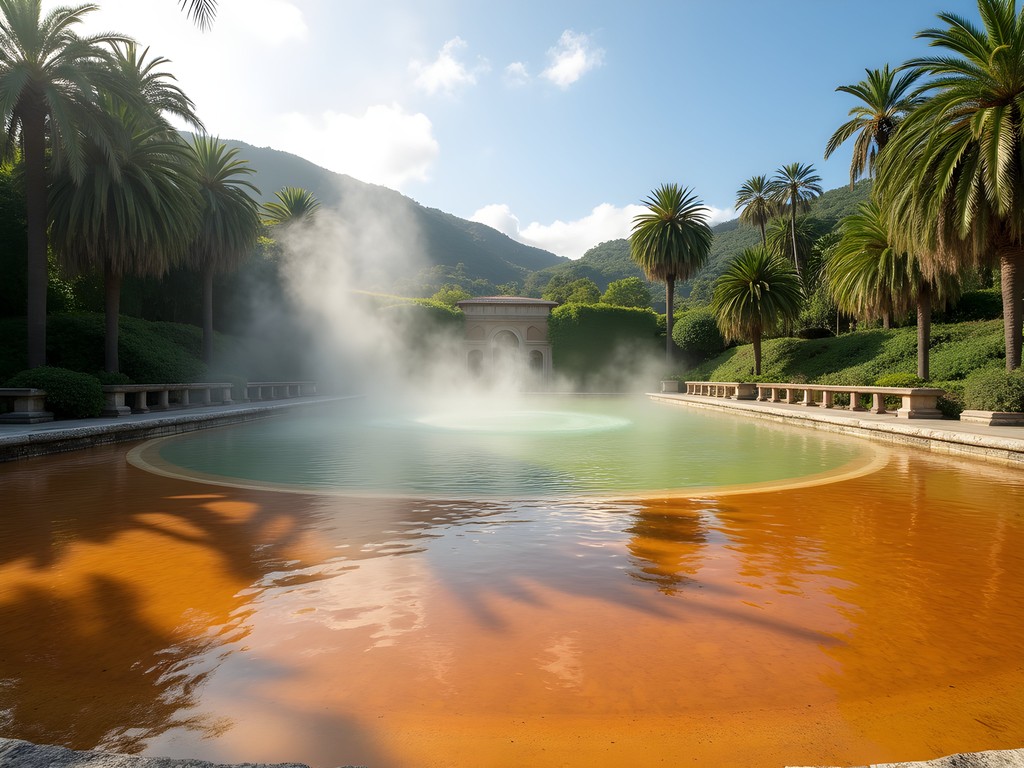
💡 Pro Tips
- Visit early morning or late afternoon to avoid the midday crowds from tour buses
- Bring dark-colored swimwear or a dedicated 'thermal swimsuit' to avoid staining
- Pack a quick-dry travel towel as the provided towels cost extra
3. Canyoning in Ribeira dos Caldeirões
For those seeking an adrenaline rush that connects you intimately with São Miguel's volcanic waterways, canyoning offers the perfect blend of challenge and natural immersion. After three visits to the island, I can confidently say that the canyoning experience in Ribeira dos Caldeirões stands among my most vivid Azorean memories.
Nestled in the northeastern part of the island near Nordeste, this river canyon system features a series of waterfalls cascading through ancient lava flows, creating a natural playground for adventurers. Unlike the more commercialized adventure activities I've experienced elsewhere, canyoning in São Miguel retains an authentic, raw quality that speaks to the island's still-emerging tourism industry.
Our guide Miguel (a third-generation Nordeste resident) explained how these canyons were once important water sources for local communities, with remnants of old mills still visible along certain stretches. Now, they serve as natural adventure corridors where you can rappel down waterfall faces, jump into deep pools, and slide down water-polished volcanic chutes.
The standard route includes about five major descents, with the tallest waterfall measuring approximately 15 meters. What impressed me most was how the activity balanced excitement with moments of serene connection to the environment—between the adrenaline rushes of descents came quiet float sections where we could admire ferns dating back to prehistoric times and endemic flora clinging to the canyon walls.
While several operators offer canyoning experiences, I recommend booking with local companies that emphasize environmental stewardship and limit group sizes. Our experience with Azores Adventure Islands stood out for their thorough safety briefing and the guides' genuine passion for sharing their island's natural heritage.
Don't worry about equipment—operators provide everything from wetsuits to helmets and technical gear. Do bring a waterproof action camera like the action camera to capture the experience. Carlos attached one to his helmet, resulting in footage that's become something of a legend among our friends back in Madrid.
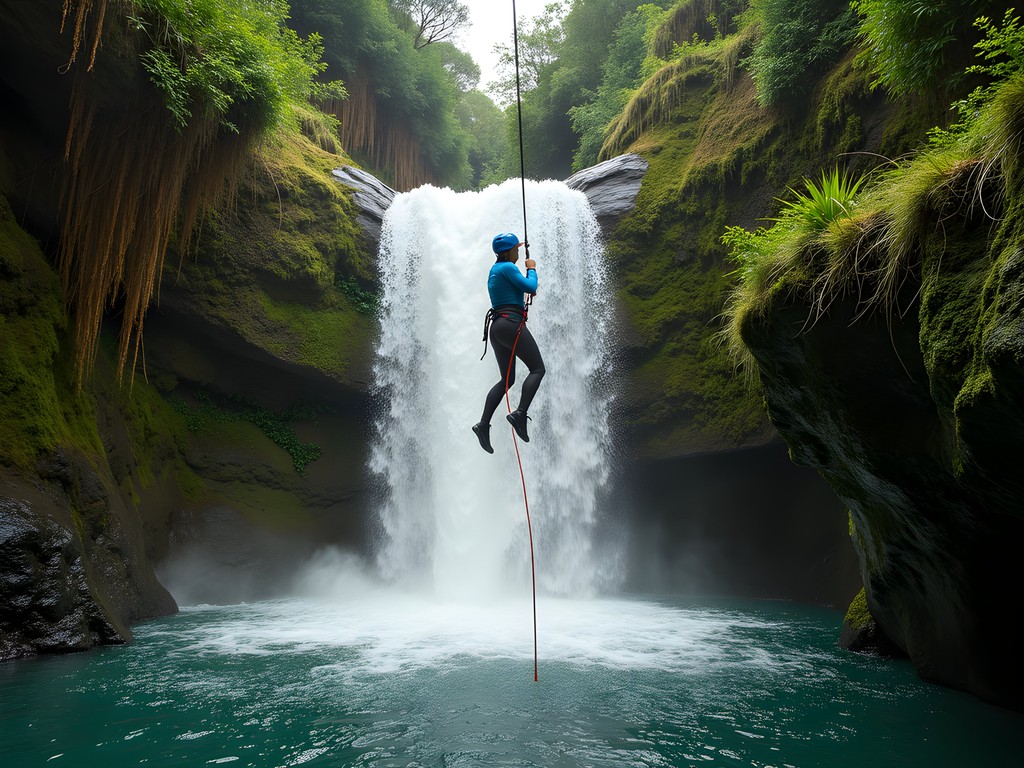
💡 Pro Tips
- Book canyoning experiences at least 3-4 days in advance during high season
- Wear swimwear under the provided wetsuit and bring a change of clothes
- Consider your comfort with heights before booking—while routes can be modified, some rappels are unavoidable
4. Whale Watching in the Azorean Waters
The waters surrounding São Miguel represent one of Europe's premier cetacean habitats, with over 25 different whale and dolphin species frequenting these rich feeding grounds. As someone who's participated in whale watching expeditions from Alaska to New Zealand, I can attest that the Azores offers something truly special—an opportunity to witness these marine giants against a backdrop of dramatic volcanic coastlines.
The island's whaling history adds a poignant dimension to modern whale watching here. Until the 1980s, Azorean communities relied on whale hunting as an economic lifeline. Today, many former whalers and their descendants have transformed their deep knowledge of cetacean behavior into conservation-focused tourism operations. During our excursion from Vila Franca do Campo, our spotter (vigia) was the grandson of a whaler who proudly explained how his family had transitioned from hunting to protection within a single generation.
Spring offers particularly rewarding whale watching, as migrating baleen whales join the resident sperm whale population. On our April excursion last year, we were blessed with sightings of a blue whale mother and calf—an experience that moved my typically stoic husband to tears. The sheer scale of these creatures, the largest animals ever to exist on our planet, creates a profound sense of perspective that no photograph can adequately capture.
Beyond the headline-grabbing large whales, encounters with dolphin pods provide a different but equally magical experience. Common dolphins, bottlenose dolphins, and the striking Risso's dolphins with their scarred bodies frequently approach boats with evident curiosity. During our family trip, the girls were spellbound as a super-pod of over 100 spotted dolphins surrounded our vessel, riding the bow wave and seemingly performing acrobatics for our benefit.
For those prone to seasickness like myself, I recommend taking precautions. My motion sickness bands have proven effective across multiple ocean excursions. Most operators use rigid-hull inflatable boats (RIBs) that, while faster and more maneuverable, provide a bumpier ride than larger vessels. The trade-off is worth it for the more intimate wildlife encounters these nimble craft facilitate.
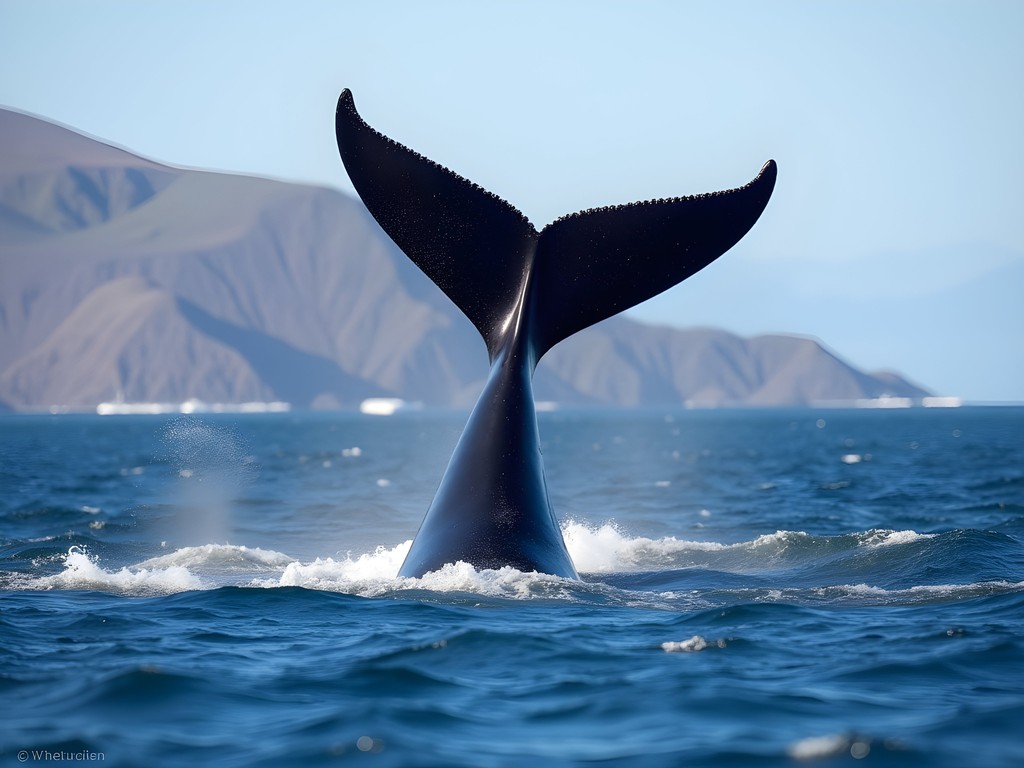
💡 Pro Tips
- Book morning tours when seas are typically calmer and wildlife more active
- Wear layers and waterproof outer gear—ocean conditions can change rapidly
- Choose operators displaying the 'WCA Responsible Watching' certification for ethical wildlife encounters
5. Mountain Biking the Volcanic Trails
São Miguel's varied topography creates a mountain biker's paradise that remains surprisingly under-the-radar compared to more established European destinations. The island's network of rural paths, forest tracks, and purpose-built trails offers everything from gentle countryside pedaling to technical volcanic descents that will challenge even experienced riders.
My personal favorite route circles the rim of Lagoa do Fogo (Fire Lake), São Miguel's highest crater lake. This intermediate trail combines reasonably technical single-track with absolutely spectacular views as you circumnavigate the caldera. During our ride last spring, we frequently had to remind ourselves to watch the trail rather than become mesmerized by the shimmering turquoise water below—a safety consideration worth noting!
For those seeking a cultural dimension to their riding, the historic rural paths known as 'trilhos' connect traditional villages through landscapes virtually unchanged for centuries. The eastern network around Nordeste offers particularly rewarding day trips, where you'll pedal past terraced fields, ancient stone walls, and through communities where elderly residents still travel by donkey. On one memorable occasion, we were invited into a local farmer's home for homemade queijadas (sweet cheese tarts) and stories about island life before modern roads connected these isolated hamlets.
The island's microclimate diversity means you can experience multiple ecosystems in a single ride. A particularly memorable route begins in the misty laurel forests near Lagoa das Furnas, descends through agricultural zones with their distinctive patchwork fields, and finishes at the dramatic north coast where waves crash against black basalt cliffs.
While it's possible to explore independently, I recommend at least one guided experience with local outfitters who understand the complex land access issues and weather patterns. Azores Mountain Bike provided exceptional service during our visits, with guides who seamlessly blended technical riding advice with cultural and geological insights.
Rather than bringing your own bike, quality rental equipment is readily available. I've been consistently impressed with the well-maintained mountain bike fleet that several operators maintain—full-suspension models well-suited to the island's occasionally rough volcanic terrain.
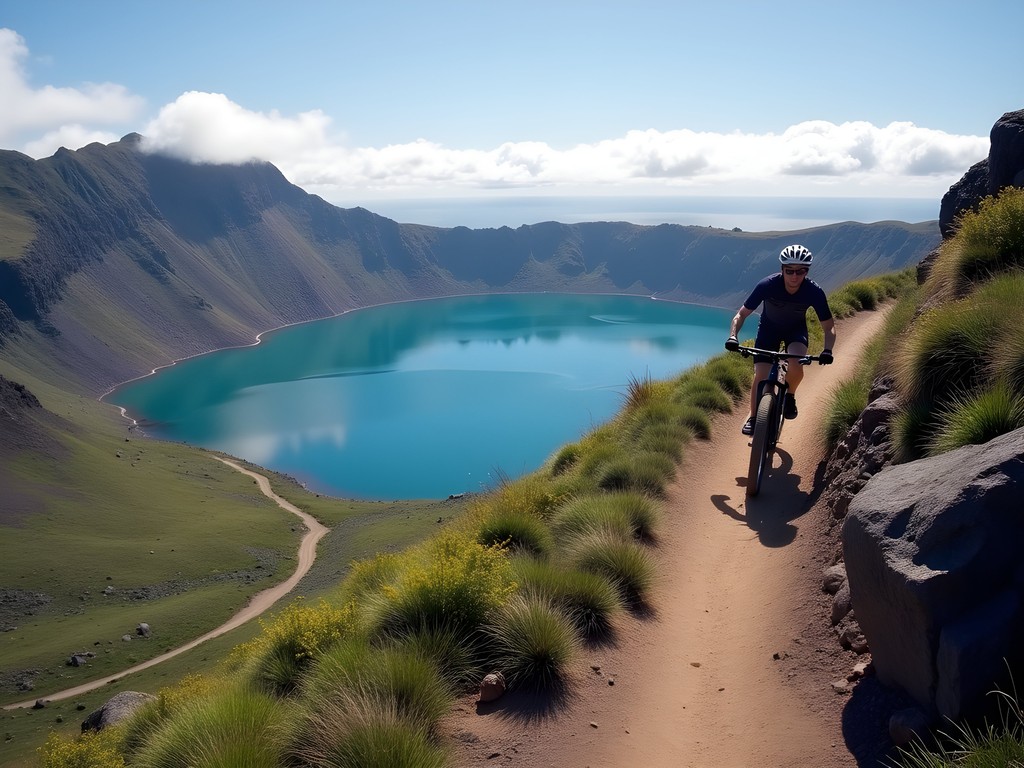
💡 Pro Tips
- Pack riding gear for variable conditions—you might experience four seasons in one ride
- Download offline trail maps as cellular coverage is spotty in the interior mountains
- Consider an e-bike option if your fitness level doesn't match your adventure ambitions—the volcanic climbs can be challenging
6. Exploring Coastal Caves by Kayak
While São Miguel's interior landscapes rightfully capture much attention, the island's coastline offers equally spectacular adventures—particularly when explored from sea level. Kayaking the volcanic shoreline reveals a hidden dimension of the island inaccessible to land-based travelers: sea caves, natural arches, and secluded beaches nestled between towering basalt cliffs.
The most rewarding kayaking route, in my experience, runs along the northern coastline near Mosteiros, where the dramatic interaction between volcanic geology and Atlantic power has sculpted a coastline of extraordinary beauty. Our guide Maria explained how these formations represent relatively recent geological history, with some caves formed by lava tubes from eruptions just a few centuries ago.
Paddling into these sea caves creates an almost mystical experience as sunlight filters through hidden openings, illuminating the water from below with an ethereal blue glow. During our family expedition, the twins were rendered momentarily speechless (a rare occurrence!) when we entered the Gruta do Amor (Cave of Love), where heart-shaped openings in the ceiling create shimmering light patterns on the water below.
Beyond the geological wonders, kayaking offers excellent wildlife viewing opportunities. Atlantic spotted dolphins frequently investigate curious paddlers, while numerous seabird species nest in the inaccessible cliff faces. On our most recent excursion, we were fortunate to witness a hunting osprey plunge into the water mere meters from our kayaks—a moment of natural drama that no wildlife documentary can adequately convey.
While some experienced paddlers rent equipment and explore independently, I strongly recommend guided tours for most visitors. The Atlantic conditions can change rapidly, and local knowledge of tides and wind patterns proves invaluable. Companies like Azores Adventure Islands offer half-day tours suitable for beginners while still accessing the most spectacular coastal features.
For photography enthusiasts, I suggest bringing a waterproof phone case to capture the experience without risking expensive equipment. The combination of water, salt spray, and the inevitable splashes makes standard camera gear impractical for most paddlers. My simple waterproof pouch has survived multiple kayaking adventures while allowing me to document these remarkable coastal explorations.
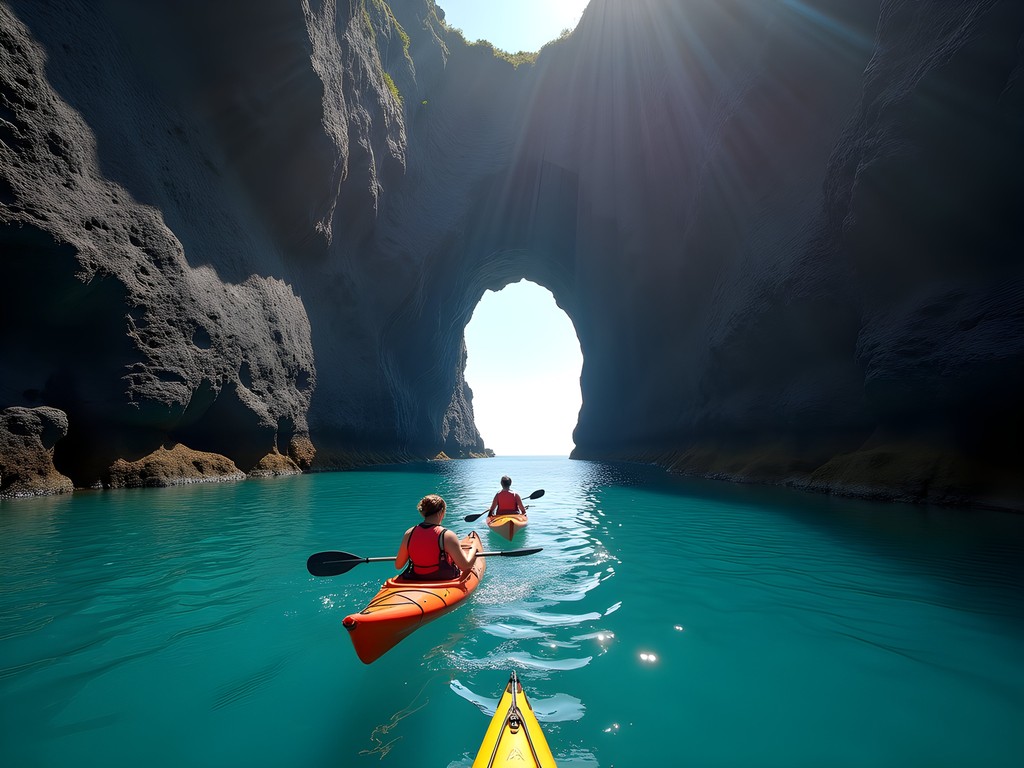
💡 Pro Tips
- Book morning kayak tours when winds are typically lighter and visibility into the water is best
- Wear quick-dry clothing rather than cotton—you will get at least partially wet
- Consider a sit-on-top kayak option if you're a beginner or claustrophobic about sit-inside models
7. Hiking to Salto do Prego Waterfall
While São Miguel offers numerous well-known hiking trails, some of my most cherished island memories come from the less-trafficked paths that reveal the island's authentic character. The trail to Salto do Prego waterfall near the eastern village of Faial da Terra represents exactly this type of hidden gem—a moderate 4.5km route that showcases the island's lush interior while culminating at a spectacular 40-meter cascade.
The journey begins in the traditional village of Faial da Terra, where narrow streets lined with whitewashed houses provide a glimpse into rural Azorean life largely unchanged for generations. As you leave the settlement behind, the trail gradually ascends through terraced agricultural plots still actively farmed by local families. During our hike, we encountered an elderly farmer harvesting sweet potatoes using methods passed down through generations—he proudly explained how his family had worked this same plot for over 200 years.
As the trail climbs higher, agricultural land gives way to laurisilva forest—a prehistoric laurel forest ecosystem that once covered much of Europe but now survives primarily in Macaronesian islands like the Azores. The dense canopy creates an almost mystical atmosphere, with dappled sunlight filtering through multiple shades of green. The rich biodiversity here includes numerous endemic plant species found nowhere else on Earth.
The final approach to Salto do Prego involves crossing the stream several times via stepping stones—nothing technically difficult but requiring attention in wet conditions. The effort proves worthwhile when you round the final bend to witness the waterfall in all its glory, plunging from a sheer rock face into a perfect swimming basin below.
During our spring visit, recent rains had energized the cascade to its full potential, creating a thunderous display that made conversation nearly impossible. The twins immediately shed their hiking boots to wade in the refreshingly cool pool—a natural reward after the uphill journey. We spent nearly two hours at this idyllic spot, enjoying the packed lunch we'd brought while watching sunlight play through the mist created by the powerful falls.
For hikers seeking solitude, I recommend starting early (before 9am) to potentially have this natural wonder entirely to yourself. I also suggest packing a dry bag for electronics and valuables if you plan to swim, as afternoon showers are common in this eastern region of the island.
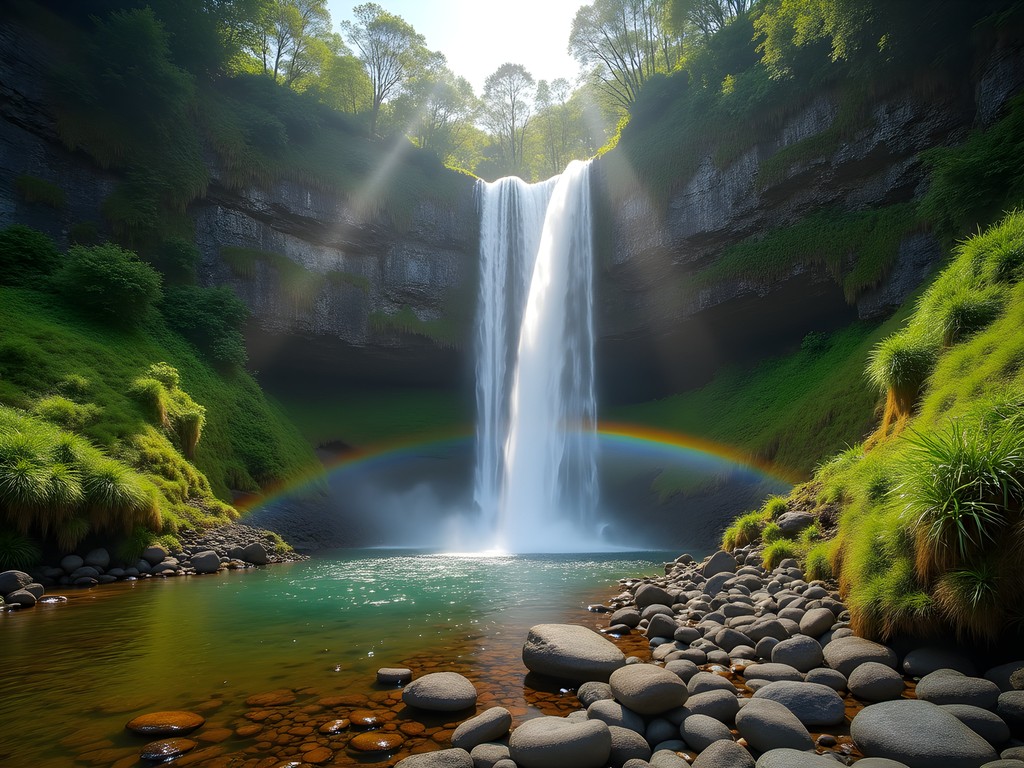
💡 Pro Tips
- Wear proper footwear with good traction—portions of the trail become slippery after rain
- Pack a swimsuit under hiking clothes if visiting in warmer months
- Bring insect repellent as the humid forest environment can harbor mosquitoes
8. Paragliding Over Volcanic Landscapes
For those seeking a truly unique perspective on São Miguel's remarkable topography, paragliding offers what might be the ultimate vantage point. As someone with a healthy respect for heights (read: mild fear), I approached this activity with some trepidation during our second island visit. Yet the experience proved so transformative that I insisted we include it again when returning with the twins—a testament to how spectacular this aerial adventure truly is.
Several launch sites exist around the island, but the premier location is undoubtedly the ridge above Sete Cidades crater lake. Taking off from approximately 800 meters above sea level, tandem flights with experienced pilots provide unparalleled views of the island's most iconic landscape. The sensation of gently lifting off the grassy slope before catching thermals that carry you upward is unlike anything I've experienced elsewhere—simultaneously exhilarating and oddly peaceful.
What makes paragliding in São Miguel special is the remarkable diversity visible from a single flight. From our launch point above Sete Cidades, we could simultaneously observe the twin blue and green lakes, the rugged northern coastline with waves crashing against volcanic cliffs, and on clear days, even neighboring islands on the horizon. The perspective reveals geological features impossible to fully appreciate from ground level, including the perfect circular rim of the massive caldera and ancient lava flows radiating outward like frozen rivers.
While no special physical requirements exist beyond basic mobility to run a few steps at takeoff, the mental aspect requires some courage. Our pilot Miguel expertly sensed my initial nervousness and started with a gentle glide before gradually introducing more dynamic movements once he saw I was comfortable. By mid-flight, I found myself actually requesting the more spiraling maneuvers that initially terrified me—a personal growth moment that became a favorite family story.
Weather conditions dictate flight possibilities, making advance reservations somewhat tentative. Most operators maintain waiting lists and will contact you when conditions prove favorable. We booked through Azores Paragliding Experience, who impressed me with their safety protocols and their commitment to environmental education during the experience. Our pilot pointed out endemic plant communities and geological features throughout the flight, adding educational value beyond the pure adventure component.
Flights typically last 15-25 minutes depending on thermal conditions, with options for video packages to document your experience. The action camera mounted on our pilot's helmet captured footage that has become one of our most treasured travel mementos—the girls' expressions of wonder as they soared above the crater rim proved priceless.

💡 Pro Tips
- Schedule paragliding early in your trip to allow weather flexibility—it's worth rearranging plans for ideal flying conditions
- Wear closed-toe shoes with good ankle support for the takeoff run
- Consider booking the earliest morning slot when thermal conditions are typically smoothest for first-time flyers
9. Coasteering the Volcanic Shoreline
For adventurers seeking to engage intimately with São Miguel's dramatic coastal geology, coasteering offers perhaps the most immersive experience possible. This multi-discipline activity—combining rock scrambling, cliff jumping, sea swimming, and cave exploration—has gained popularity in the Azores in recent years, though it remains refreshingly uncrowded compared to more established European destinations.
Our coasteering adventure along the northern shoreline near Ribeira Grande provided what my daughters later described as their "most epic day ever in nature"—high praise from teenagers generally difficult to impress. The activity begins with a safety briefing and equipment fitting (wetsuits, helmets, and buoyancy aids are all provided) before descending to a shoreline access point where the volcanic coast reveals its raw character.
What makes coasteering particularly special is its adaptability to different comfort levels. Our guide Paulo expertly gauged each family member's confidence, suggesting alternative routes or jump heights based on individual preferences. Carlos, ever the adrenaline seeker, embraced the highest jump options (about 10 meters), while I preferred the more moderate challenges that still pushed my personal boundaries without triggering full panic.
Beyond the pure adventure aspects, coasteering offers unique access to marine ecosystems normally glimpsed only by snorkelers or divers. Swimming through gullies between volcanic formations, we encountered vibrant tide pools hosting colorful anemones, darting fish, and the occasional octopus retreating into crevices. The perspective from water level, looking up at towering basalt columns formed by ancient lava flows, creates a profound appreciation for the geological forces that created this extraordinary island.
One particularly memorable segment involved swimming through a narrow sea cave that opened into a hidden chamber illuminated by a natural skylight—a cathedral-like space accessible only during specific tide conditions. The girls fell completely silent as we floated in this natural wonder, the only sound being water lapping gently against the cave walls—one of those perfect travel moments that remain etched in memory.
While physically demanding, coasteering routes can be tailored to various fitness levels. Our half-day experience with Azores Adventure Islands struck an ideal balance between challenge and accessibility, with plenty of rest breaks built into the itinerary. The activity requires basic swimming ability but no previous technical experience.
The variable Atlantic conditions make proper equipment essential. The provided 5mm wetsuits proved adequate for spring temperatures, but I recommend bringing your own water shoes if you have them—the volcanic rock can be sharp, and well-fitting footwear enhances confidence during the climbing sections.
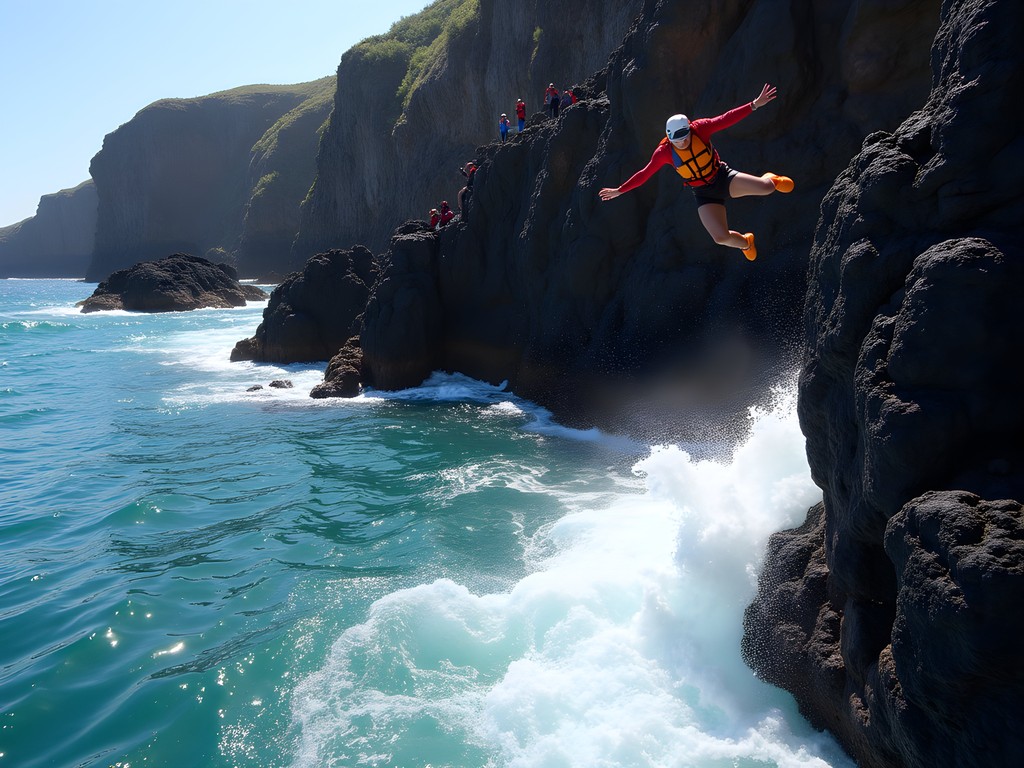
💡 Pro Tips
- Eat a light meal before coasteering—the combination of physical activity and wave motion can upset a full stomach
- Remove jewelry and watches before the activity as they can catch on rocks or be lost
- Bring a change of warm clothes for after the experience, even in spring—the wind chill factor when wet can be significant
10. Stargazing at Lagoa do Fogo
While São Miguel offers abundant daytime adventures, one of its most magical experiences occurs after sunset. The island's remote mid-Atlantic location and relatively low light pollution create ideal conditions for stargazing, particularly from higher elevation sites away from coastal communities. After three visits exploring various nocturnal viewpoints, I can confidently recommend the parking area above Lagoa do Fogo as the premier stargazing location on the island.
Situated at approximately 900 meters elevation on the central mountain range, this site offers a 360-degree viewing platform largely sheltered from coastal weather patterns. On clear nights, the celestial display proves nothing short of spectacular—a dome of stars stretching horizon to horizon with the Milky Way's cloudy band clearly visible arching overhead. During our spring visit last year, we were fortunate to witness a meteor shower that added shooting stars to the already impressive display.
What elevates this experience beyond mere astronomical observation is the setting itself. The knowledge that you're standing atop a dormant volcano, with a crater lake shimmering faintly below in starlight, adds a profound dimension to the experience. The girls, initially skeptical about an evening drive up a mountain, fell into reverent silence within minutes of arrival—a reaction I've observed repeatedly when people encounter truly dark skies for the first time.
Beyond casual observation, photography enthusiasts will find this location ideal for astrophotography. The minimal light pollution and dramatic foreground elements (including the silhouetted crater rim) create opportunities for stunning night sky compositions. During our most recent visit, Carlos spent hours experimenting with long exposures while the rest of us alternated between stargazing and warming up in the car with thermoses of hot chocolate.
For optimal viewing, timing your visit with the new moon phase guarantees the darkest skies. However, even with partial moonlight, the quality of the celestial display surpasses what most visitors experience in their home environments. Spring offers generally favorable conditions with increasing likelihood of clear nights as summer approaches.
Practical considerations make some advance planning essential. The mountain location experiences significantly colder temperatures than coastal areas, necessitating warm layers regardless of season. I recommend bringing a headlamp with red-light mode to preserve night vision while navigating the viewing area. Additionally, downloading a star identification app (I use Star Walk 2) enhances the experience by helping identify constellations, planets, and other celestial features.
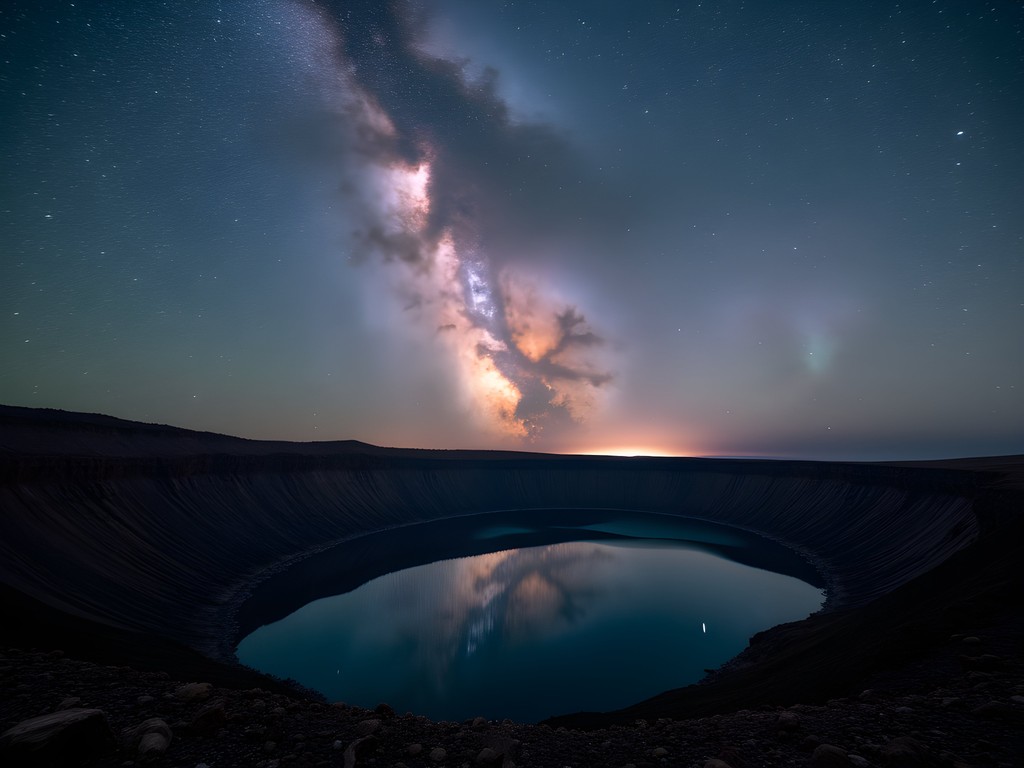
💡 Pro Tips
- Check weather forecasts specifically for mountain conditions—coastal areas may be clear while cloud covers the interior peaks
- Bring significantly warmer clothing than you'd wear at sea level—temperatures can drop below 10°C even in spring
- Allow 20-30 minutes for your eyes to fully adapt to darkness for the best viewing experience
Final Thoughts
As our flight lifted off from Ponta Delgada on our most recent departure, I found myself already planning our next return to São Miguel. This remarkable island offers a rare combination in today's over-touristed world—authentic adventure experiences in pristine natural settings that remain accessible without overwhelming crowds. What makes São Miguel truly special isn't just the diversity of activities available but how these experiences connect visitors to the island's essence—its volcanic soul, its maritime heart, and the resilient culture that has evolved in this remote Atlantic outpost. Whether you're swimming in iron-rich thermal waters, soaring above twin crater lakes, or simply watching stars from a volcano's edge, São Miguel offers transformative moments that resonate long after returning home. As a social worker who's spent decades observing how environments shape human experience, I'm struck by how this island landscape seems to recalibrate visitors' perspectives—slowing our pace, heightening our senses, and reconnecting us to natural rhythms often lost in contemporary life. Pack your sense of wonder alongside your hiking boots; São Miguel awaits with adventures that will reshape your understanding of what's possible on a mid-Atlantic island.
✨ Key Takeaways
- Spring offers ideal conditions for São Miguel adventures with fewer crowds than summer and increasingly stable weather
- Combining land and water activities provides the most comprehensive experience of the island's diverse ecosystems
- Local guides add immense value through their cultural knowledge and access to less-visited locations
- Allow flexibility in your itinerary—weather conditions can significantly impact certain activities
📋 Practical Information
Best Time to Visit
Mid-April through June offers ideal conditions with spring flowers, moderate temperatures, and fewer tourists
Budget Estimate
€100-150 per day including accommodations, activities and meals
Recommended Duration
7-10 days allows comprehensive exploration without rushing
Difficulty Level
Moderate - Activities Can Be Tailored To Various Fitness Levels But Some Hiking And Adventure Experiences Require Basic Physical Fitness

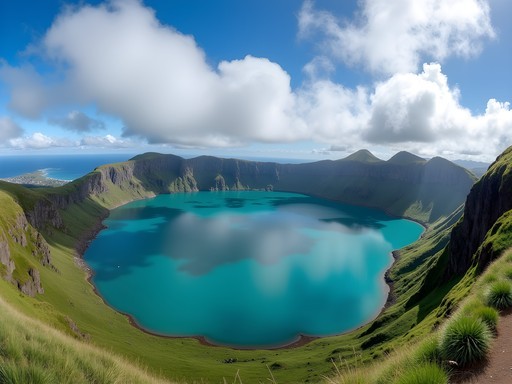
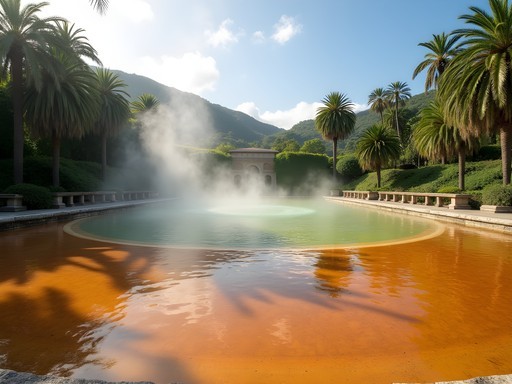

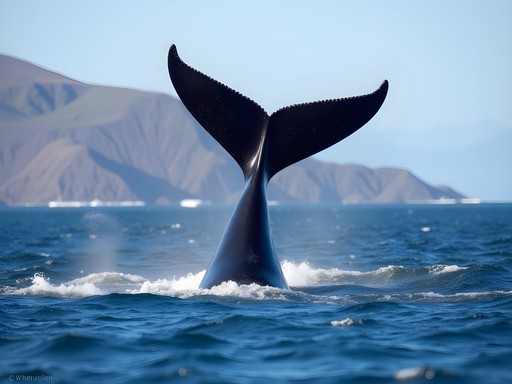
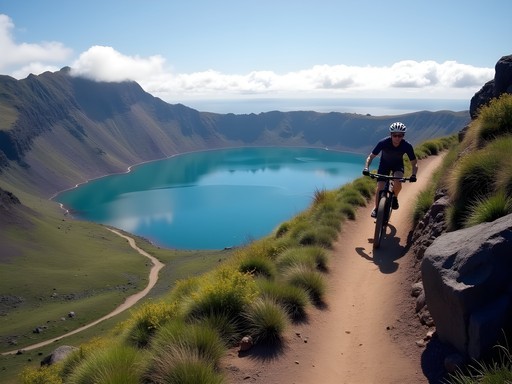
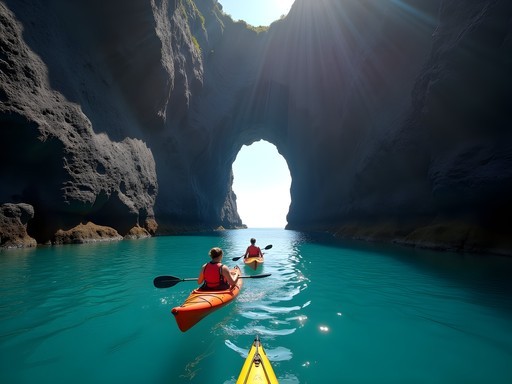







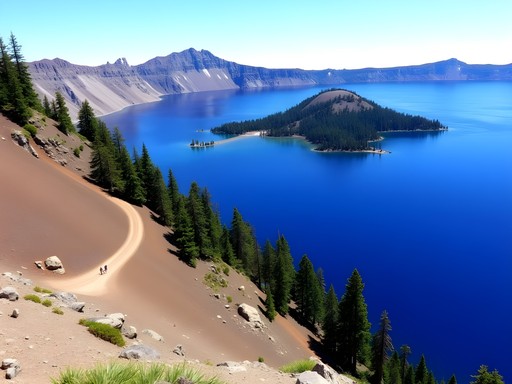


Comments
vacationclimber
Just booked tickets after reading this! Can't wait to see those twin lakes in person!
winterwalker
Planning a trip there in spring. Is it possible to do these activities without renting a car? Public transportation options?
Megan Martin
I was there on a business trip and extended my stay to explore. Public buses do reach major sites like Sete Cidades and Furnas, but they're infrequent. I'd recommend renting a car for flexibility or joining organized tours. I used this guidebook which has all the bus schedules and tour operator contacts.
winterwalker
Thanks for the tip! Will look into car rental prices vs. tour costs.
Riley Griffin
Kenneth, your post couldn't have come at a better time! We're planning our family trip to the Azores for next spring. We've got two teenagers who would love the canyoning experience. Quick question - did you find the hiking trails well-marked? My biggest concern is navigating with kids in tow. Also, we're debating between staying in Ponta Delgada the entire time or splitting our stay between there and Furnas to be closer to the thermal pools. Any thoughts from your experience? The kids are especially excited about whale watching - was there a particular company you'd recommend?
photolegend
Not the author but we stayed in both places and definitely recommend splitting your time! Furnas has such a different vibe and it's so peaceful in the evenings after day trippers leave.
dreamway8957
Those whale watching photos are incredible! Added to my bucket list!
wildexplorer1080
Just got back from São Miguel last month and did the Sete Cidades hike! Those twin lakes are even more stunning in person than photos show - one truly blue, one green. We went early morning to avoid crowds and fog. The thermal pools at Terra Nostra were perfect after all that hiking - just remember to bring a dark swimsuit because that iron-rich water will stain light colors!
Nicole Russell
Did you try the cozido at Furnas? That stew cooked underground by volcanic heat was the highlight of my trip! Going back in November for more hiking!
wildexplorer1080
Yes! The cozido was amazing! Had it at Tony's Restaurant. Definitely worth the wait while they dig it up from the ground!
blueace
Just got back from São Miguel last week and did most of these activities! The whale watching was incredible - we saw sperm whales and three different dolphin species. One thing to add to your list: the hot springs at Caldeira Velha. It's less crowded than some of the other thermal pools and has this amazing waterfall you can stand under. Pro tip: bring water shoes for all the thermal areas as some have slippery or rough surfaces. I used my water shoes and they were perfect for all the thermal springs and canyoning.
tripqueen
How difficult is the canyoning? I'm going in October and wondering if it's suitable for beginners?
blueace
Not the author but I did canyoning there last year. They have different routes for all levels. Definitely book with Picos de Aventura - they were awesome guides and provided all equipment. Even as a first-timer I felt totally safe!
tripqueen
Thanks so much! That's super helpful. Will definitely check them out!
Amit Sullivan
Kenneth, your post brought back wonderful memories of my time in São Miguel last autumn. The hike around Sete Cidades was indeed magical - we caught it on a clear morning when the lakes were that perfect blue and green. One tip for fellow travelers: if you're hiking the full rim trail, start early! We began at 8am and had most of the trail to ourselves until around noon. Also worth mentioning that the thermal pools at Terra Nostra turned my white swimsuit slightly orange, but it was absolutely worth it for that mineral-rich soak. The garden surrounding the pool is an attraction in itself.
sunsetexplorer
Did you need to rent a car to get to these spots or is public transportation decent?
Amit Sullivan
We rented a car which gave us flexibility, but there are buses that connect major spots. Just check schedules carefully as they're not super frequent. Some tours also offer transportation to popular sites.
photolegend
Those twin lakes look incredible! Adding this to my bucket list for sure.
coolseeker
Thanks for this great guide! Would you recommend São Miguel for a solo traveler? Is it easy to meet people and join group activities?
Venture X
Premium card with 2X miles, $300 travel credit, Priority Pass